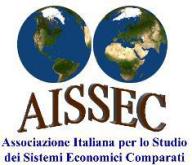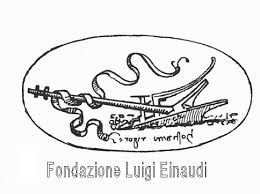by Alessia Amighini, University of Eastern Piedmont
Sintesi
Questo contributo presenta l’iniziativa che porta i nomi di One Belt One Road (OBOR) o Belt and Road Initiative (BRI), proposta da Xi Jinping nel 2013 e proiettata al centro della diplomazia economica cinese negli ultimi anni. Tale imponente progetto ha l’obiettivo di rafforzare e fluidificare il commercio internazionale fra la Cina, le regioni dell’Asia Centrale e Meridionale e l’Europa. Si tratta di una complessa strategia di sviluppo nazionale delineata dal governo, che prevede di generare un enorme impatto sia a livello economico che geopolitico, declinandosi su cinque linee principali: il coordinamento di diverse politiche nazionali, la costruzione massiccia di infrastrutture per i trasporti, l’implementazione di politiche a sostegno dei flussi commerciali, l’integrazione finanziaria e la promozione di scambi a livello di capitale umano. La promozione dei flussi commerciali dovrebbe avvenire principalmente attraverso il rafforzamento dei legami bilaterali già esistenti fra paesi, lo spostamento massiccio dal trasporto per vie marittime all’utilizzo del trasporto su rotaia e la creazione di nuovi canali verso l’Asia Centrale, di alto interesse sia per la Cina che per l’Europa. L’articolo sottolinea gli elementi che rendono il progetto OBOR peculiare rispetto a iniziative e trend passati legati alla Via della Seta.
The so-called New Silk Roads proposed by Xi Jinping in 2013 is a commitment to ease bottlenecks to cross-border trade by building networks of connectivity along the existing and planned international routes from various regions of China across Central and South Asia to Europe as a terminal point. Under the label of ‘One Belt, One Road’ (OBOR), or ‘Belt-and-Road Initiative’ (BRI), the project has since become the centrepiece of China’s economic diplomacy.
The BRI is much broader in scope than its predecessors, i.e. the ancient Silk Road(s) dating back to the Han Dynasty (206 BC –220 AD), labelled in that way by German geologist Baron Ferdinand von Richthofen only in the mid-nineteenth century, and the “Go Out” policy introduced by the Chinese government back in the late 1990s. Unlike the old Silk Roads between China and Europe, which included land routes and sea-lanes connecting Xian to Rome mainly through southern corridors crossing Iran and Turkey, the Belt and Road project should travel through Central Asia, Russia and Eastern Europe, with the aim to reach the main Northern European port of Rotterdam both from Southern and Central Europe. Unlike the ancient Silk Road, which was largely an unplanned outcome of the trading activities between China and its partner countries, the Belt and Road project is a comprehensive national development strategy designed by the government, with massive international development impact.
As securing commercial ties and flows with important partner countries has always been a major goal of international relations, the Belt and Road project has inspired lively debates in business, policy and scholarly circles all over the world about its impact on current international economic and political affairs. In fact, although trade is a key pillar of the project, the BRI is not just a way of reviving ancient trade links between Asia and Europe, but an ambitious programme with massive economic and geo-political impact on various regions in Asia, Europe and also Africa. By providing transport infrastructure and increasing connectivity, the Belt and Road project aims to stimulate economic development over vast areas of land from the least developed inner and western provinces of China to the so-called STAN countries in Central Asia, the region with the most promising development prospects in the next few decades.
The BRI specifically includes a ‘Silk Road Economic Belt’ and a ‘Maritime Silk Road’, both encompassing a number of corridors with the main aim to promote cross-border connectivity between China and Europe. Connectivity covers the five major areas of policy coordination, infrastructure construction (including railways and highways), trade facilitation, financial integration and people-to-people exchanges. As infrastructure construction is the dominant feature of the New Silk Road, its most evident and direct impact is likely to be on the routes of international trade between China and its trading partners. Moreover, because insufficient infrastructure acts as a major barrier to trade flows precisely along the land routes and sea-lanes where the BRI should develop, an additional impact will be on the volume of trade among the countries covered by the initiative.
According to the Industrialization of the Belt and Road Countries Report published by the Chinese Academy of Social Sciences, BRI will extend across up to 65 countries, accounting for over nearly two-thirds of the world’s population and one-third of global GDP. Currently, 60% of China’s trade (in value) travels by sea (and a much higher share in volume), due to the lower transport costs associated with international shipments compared to railway transport and to the lack of infrastructure for land transport across Central Asia. Therefore, the BRI is likely to have major implications on the routes of China’s trade to the extent that it will improve regional and international land connectivity across Eurasia. BRI has the potential to significantly alter world trade routes and to become a game changer in international trade relations.
Under the current pattern of international trade routes, the Belt and Road initiative will have major trade-creating effects, to the extent that investment in infrastructure will be vital to increase the efficiency of maritime connectivity. Moreover, international cooperation and partnerships through the financing institutions related to BRI will allow overcoming the difficulties faced by individual countries who are not able to bear alone the financial effort required by infrastructure investment. International cooperation is also required to create incentives for shipping companies to serve destinations that are not profitable.
Trade creation along the Belt and Road will work through two major channels. On the one hand, one type of trade creating effect will work through the expansion of existing trade ties between pairs of countries that are already important trade partners, through the decrease of transport costs and trade barriers. Although some estimates exist, assessing the impact of BRI on trade is not an easy task because the most important impact will arise from the switch of trade routes from the current predominance of seaborne trade to railway trade. An additional type of trade creating effect will work through new trade routes that will unlock potential trade ties with new trading partners, most notably in the so-called STAN countries in Central Asia, large and growing markets where both China and Europe currently hold good trade relations, which could further improve based on the complementarities of their economic structures.
*This comment is part of a longer chapter forthcoming in the next Nomos and Khaos report edited by Nomisma.









